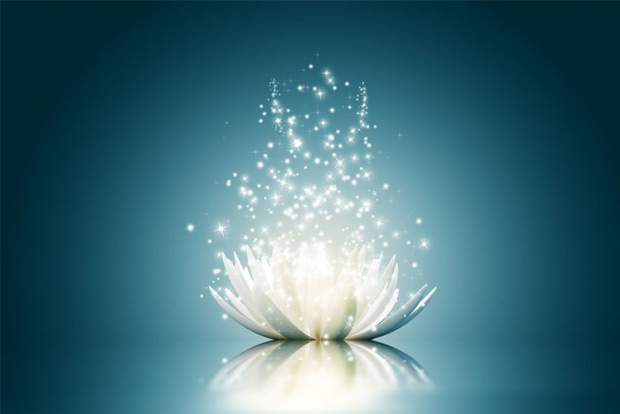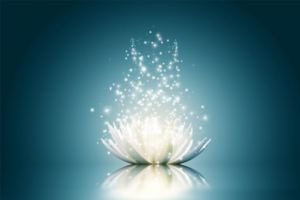
Why the lotus flower is one of the most sacred plants in the world? Its characteristics are a perfect analogy to the human condition: -Even when its roots are in the dirtiest waters, the Lotus produces the most beautiful flower. With its roots latched in mud, it submerges every night into river water and miraculously re-blooms the next morning, sparklingly clean. Reaches the light becoming the most beautiful flower ever.
In many cultures, this process associates the flower with rebirth and spiritual enlightenment. With its daily process of life, death, and reemergence, its no wonder that the lotus holds such symbolism. Because of these meanings, the lotus is often seen alongside divine figures in some cultures.
A SACRED FLOWER
For the Egyptians, represents the universe and represent the (re)birth of the sun (because it blooms by day and closes by night). In Hindu culture, it is said that gods and goddesses sat on lotus thrones. And a longstanding Buddhist story states that the Buddha appeared atop a floating lotus, and his first footsteps on Earth left lotus blossoms. The lotus flower represents self-awareness and its symbol is used to encourage us to step outside our comfort zone. When in bloom, the lotus represents our mind opening up to everything and everyone around us. A step on the way to attaining eternal spiritual enlightenment.
The lotus is also a symbol of the singular source of creation.
THE CHAKRAS’ LOTUS PETALS
The petals of the lotus flower are arranged in layers, and when the flower blooms, each layer opens to reveal the ones inside. This has also been used as a metaphor to describe how we attain higher levels of self-realization, which lead to the concept of the lotus as the seven chakras. When each chakra becomes activated, each lotus petal of the chakra can be thought of as opening and “blooming” along with a person’s energy.
DIFFERENT TYPES OF LOTUS FLOWERS AND THEIR MEANING:
White: White lotus flower is associated with purity, as well as transcendence. In feng shui, white is also linked with the metal element, which has the ability to “cut through” obstacles.
Pink: Pink (or pink-tipped) lotuses sometimes accompany deities in Hindu imagery. In feng shui, pink is also seen as a softer color that’s associated with inviting feminine energy.
Red: In Buddhism, there are five main Buddha families (Tathāgatas), with one of them called Padma. “The Padma family relates to the fire element, so red-toned lotuses represent fire energy as well. Flowers of this color symbolize inspiration, passion, and expression.
Blue: The blue lotus (Nilotpala), which is always shown closed, “is a special symbol for Mahayana Buddhists to describe the potential of beings to realize their inherent Buddha-nature, which can then ‘blossom’ into full bodhisattva-hood.” In Buddhism, a bodhisattva is a person who is able to reach Nirvana but delays it out of compassion in order to help others.
HOW TO USE THIS SYMBOL RESPECTFULLY:
- Draw them.
Like drawing a mandala, this mindful activity can have a relaxing, meditative quality. - Keep images of them.
Anyone can bring lotus imagery into their home like photos, paintings, drawings, etc. Let it serve as a reminder that “we have all the potential to rise above all challenges and bring forth something beautiful and pure.” - Sit in lotus yoga pose.
In yoga, the lotus pose helps you connect to your root chakra. This chakra is associated with our creativity, emotions, and intimacy. The signature pose is known as one of the more advanced yoga poses and makes you feel grounded, stable and aware. - Plant them.
Whether it’s inside your home or in an outdoor garden, given you live in the right climate.
However you decide to work with the lotus, may it bring more beauty into your life.

